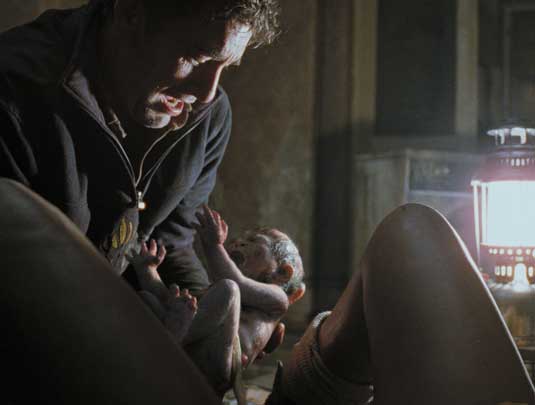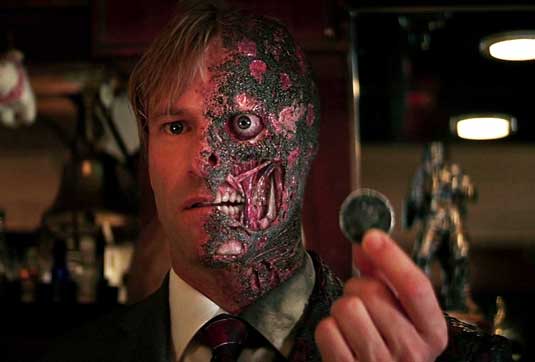5 breathtaking examples of VFX from Framestore
Following their success in the 2014 Oscars, we look at five magical moments from British VFX studio Framestore.
In the field of global VFX, Framestore is the studio du jour. From its humble beginnings in 1986, this British visual effects company now works on some of the world's biggest movie, TV and advertising projects, and on Sunday night it bagged the best VFX Oscar for its work on Gravity - possibly its most challenging project to date.
Framestore has become a poster child for the British VFX scene, and thanks to an ever-increasing pool of talented artists, more and more movie producers are taking advantage of the UK as a centre of excellence, and employing Framestore to work its CG magic.
As one of a handful of lauded VFX studios in the UK, Framestore's body of work continues to impress, and in this post we feature five stunning examples from its back catalogue.
NOTE: Please be aware that some videos include spoilers.
01. The CG baby (Children of Men)

Despite Double Negative handling the majority of CG sequences on the acclaimed, dystopian sci-fi movie Children of Men, for its most notable shot - the CG depiction of a human baby - director Alfonso Cuarón turned to Framestore. And the challenge came with added pressure: Cuarón insisted on one of his trademark single takes (at over three minutes), which had been filmed with a hand-held camera, lit by a handheld light, and with the baby in close-up.
But there was more. The shot was never originally intended to be a CG-only creation. There was an animatronic baby originally used on set, to which CG limbs were going to be added in post, but it wasn't realistic enough for the movie's director to include.
"Coming as a key plot point of the film, and at this point of heightened emotion, it was critical that the shot felt 100 per cent real," says Framestore's VFX supervisor on the project, Tim Webber.
Daily design news, reviews, how-tos and more, as picked by the editors.
"We could not afford for anyone to be taken out of the film at this point. It was a high target, with a kicking and screaming baby. But the reactions we are getting, with even seasoned VFX professionals asking whether the baby is CG or not, suggest that we've hit our target."
The results were stunning, and Framestore further cemented its reputation with Alfonso Cuarón who went on to use Framestore for his Oscar-winning movie, Gravity.
02. Harvey Dent (The Dark Knight)

In creating a face ravaged by fire, but with one half remaining untouched and the other horrifically disfigured, Framestore took on one of The Dark Knight's most striking and important transformations: that of Harvey Dent into Two-Face. The Framestore team also had the added challenge of creating something that, whilst looking real, retained a comic book reality to it, and wasn't so disgusting that it made viewing it difficult for the movie's audience.
"The last time Two-Face was in a film, prosthetic makeup created the burned side of the face," Nick Davis, visual effects supervisor explains. "This time, we wanted it to be a subtractive effect, as if half his face had gone. You see his teeth, exposed muscles, his eyeball. Chris [Nolan] wanted us to come up with a design that was photorealistic and shocking, but not so revolting that the film would be unwatchable."
At Framestore, Tim Webber led a team of artists and technicians worked on 226 shots for The Dark Knight (277 including IMAX and Scope versions), with 120 of these shots involved the digital make-up for Harvey Dent. Framestore modelled the face in Maya, with tweaks made in Mudbox and further work done BodyPaint 3D, and then tracked it to live-action plates, where Aaron Eckhart had worn tracking markers on his face.
"We were basically aiming to do facial capture on set," says Webber, "And not just to get a general look, but to be pixel perfect. The work we did was new and at the edge of anything done before."
03. Iorek Byrnison (The Golden Compass)

Committing the first book of the 'His Dark Materials' series to film must be up there as one of the toughest gigs for a director, so we can't judge the production team too harshly. But there was one crowning achievement that The Golden Compass certainly can be proud of: the realisation of Iorek Byrnison, a warring polar bear with a kick-ass set of armour.
The work began with the team creating models based on real anatomy, pulled together with reference materials including photos, videos, specially shot footage, and input from cameramen working on natural history projects. The challenge was to create a real polar bear first, and then tackle the anatomical augmentation required by the storyline (such as opposable thumbs).
"Chris Weitz (Director) and Mike Fink (VFX Supervisor) made it clear to us early on that they regarded Iorek as a true co-star, and expected an accordingly strong performance from him," says Ben Morris, Framestore's VFX Supervisor on the project. "We'd all the necessary experience, skills and technology in place, but we'd never previously brought them all together like this."
Other challenges included making Iorek talk, which was the job of lead animator Dadi Einarsson, and how to present a polar bear's dense, insulating undercoat and guard hairs, which was tackled by CG supervisors Laurent Hugueniot and Andy Kind. But, like everyone else involved in bringing Iorek Byrnison to the big screen, they did it with aplomb.
04. Joey's Trench Run (War Horse)

Whilst doing our best to avoid major spoilers, there is a moment in Steven Spielberg's movie adaptation of War Horse that completely changed the legendary director's position on the use of VFX. Coming at the end of the movie, and making up one of its most emotional scenes, our showcased shot shows Joey - the eponymous War Horse - vaulting a tank, running through a First World War trench, evading capture and a volley of mortar explosions, ultimately collapsing in a tangle of barbed wire.
Spielberg was initially adamant that no digitally created horses were to be used in the making of War Horse, and it was only when Framestore's Ben Morris and his team created a digital horse for the troublesome tank jump sequence that Spielberg softened his view.
"When we started delivering shots we were all a little nervous, I think," says Morris, "But we soon realised we'd get immediate (and generally positive) feedback from Steven, and we grew in confidence."
Framestore eventually provided more than 200 shots in total, and contributed all the VFX work for War Horse. The work included rider removal on numerous horse shots, CG horse creation, CG barbwire, matte paintings and more. And so impressed was Spielberg with what Morris and his team achieved on War Horse, that he went on to enlist Morris as his VFX supervisor for his next major release, Lincoln.
05. Space tumbling (Gravity)

According to Leroy Chiao, a former commander of the International Space Station, Alfonso Cuarón's Gravity perfectly captures the fear of "tumbling off into space", a real and metaphorical scenario that sits at the heart of this Oscar-winning sci-fi thriller.
And although Gravity features VFX set-pieces where massive objects explode, crash and career, it's the depiction of its lead characters in zero gravity that steals the show. An effect achieved with three main elements: a cube of light, a robotic camera arm, and a tilt rig.
"We built a contraption called the Light Box, which is a new invention," visual effects supervisor Tim Webber told Studio System News. "It was a 10-foot cube surrounding the actor, and on the inside of all the surfaces is essentially a series of 1,900,000 LED screens, using the same technology they use on stage at concerts and such.
"It gave us a tremendous amount of control on all the things we needed to do, moving the camera and lights at the same time. It also meant that the actor had an image and got a view of what they were seeing from space, so it gave them a sense of their surroundings."
By combining ground-breaking technology with a standout performance from Sandra Bullock, Framestore and Cuarón have created a film which will be inspiring artists for years to come.

Over the last 20 years, Dan has edited a number of print magazines and websites, including Computer Arts, 3D World and ImagineFX, and has written for publications including the Sunday Times, the Guardian, the Manchester Evening News, Manchester United Magazine, T3, and many more. He has also worked as the digital editor of Creative Bloq's sister magazine, Wallpaper*.

